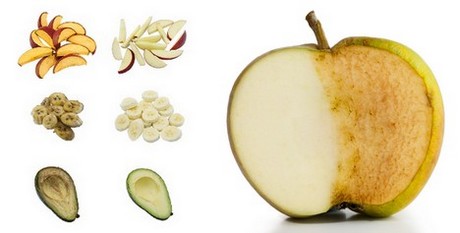FOOD OXIDATION
Oxidation: Food oxidation occurs when oxygen present in the air comes into contact with food and when it oxidizes it releases electrons, producing another simultaneous reaction that captures the released electrons.
It is called a reduction-oxidation reaction to any chemical reaction in which an element gives up electrons and, therefore, its oxidation state increases. Electron transfer occurs through the acquisition of oxygen atoms or vice versa (Aruoma 1998)
Oxidation is responsible for the deterioration in the quality of food products,
In the body the oxidation process of immediate initiation (carbohydrates, lipids and proteins) It is produced by enzymes, but oxidation in food is produced by enzymes called polyphenol oxidase, which, when in contact with air, transform phenols into quinones. (Guerra, 2001)
The oxidation process is divided into 3 phases which are:
Beginning: In the presence of external factors, they generate instability in the unsaturations of fatty acids.
Propagation: in the presence of oxygen, free radicals form the primary oxidation compounds, called peroxides and hydroperoxides.
Termination: the primary compounds generate very unstable molecules, which are easily degraded into aldehydes, ketones, alcohol, among others (Decker 2002).
Another important role in the subject are antioxidants. They are molecules that prevent oxidation reactions from taking place, since being reducing agents, they cause other substances to reduce while they oxidize themselves.(Niki 2018).
For example, animal and plant tissues contain antioxidant molecules to prevent this from happening.
Conclusion: It was revealed that oxidation in food is produced by enzymes called polyphenol oxidase, and that when it comes into contact with air it transforms phenols, this in order to understand the process that leads to oxidation. However, these reactions occur constantly around us, from the corrosion of metals, to the metabolism.

Comentarios
Publicar un comentario